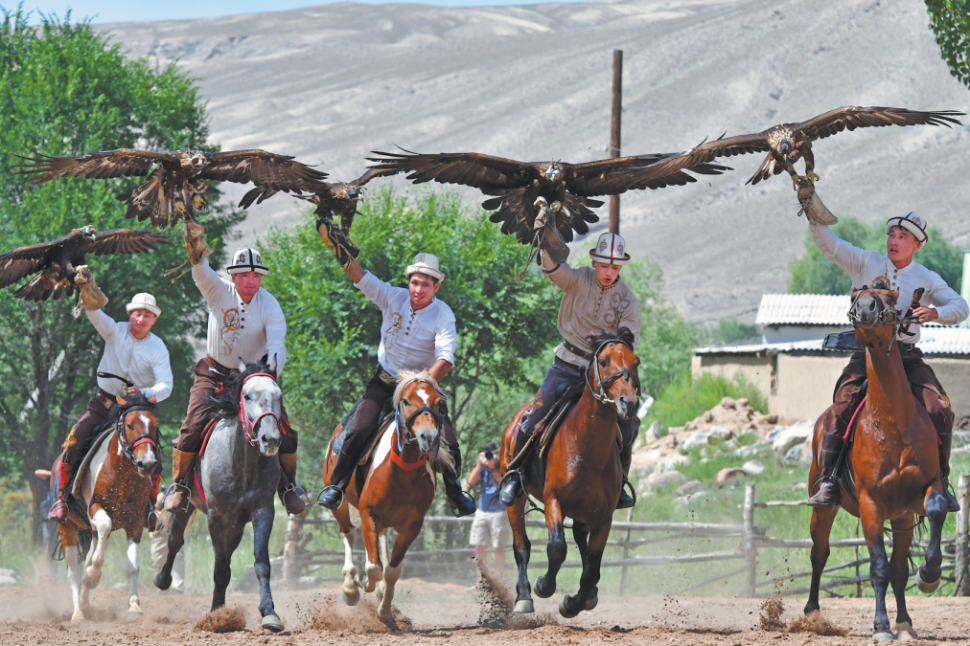‘The Road of Rejuvenation’: A must-see exhibition
By Alex Chan | chinadaily.com.cn | Updated: 2018-07-19 18:12

One of permanent exhibitions currently being showcased at the National Museum of China is The Road of Rejuvenation or 复兴之路 in Chinese. This exhibition explores several historical eras experienced by the Chinese people from all walks of life, starting with the Opium War in 1840, a year when China was reduced to a semi-feudal and semi-colonial society. The Road of Rejuvenation is an exhibition on China’s modern and contemporary history, as well as on the development of the current Chinese socio-economic system, founded on socialism with Chinese characteristics.

The exhibition is divided into five main sections. The first part explores the period when China was reduced to a semi-colonial and semi-feudal society, while the second describes the Chinese people’s fight against fascism to save the nation. The third section covers the achievements of the Communist Party of China (CPC) in liberating the nation and founding the People’s Republic of China. The fourth part explores the efforts in building a socialist country, while the last section brings us to the contemporary period, characterized by reform and opening-up and socialism with Chinese characteristics.
Through the different chapters of this exhibition, the visitor can grasp not only the essence of China’s national road of rejuvenation, but also its path toward achieving national independence. After the Industrial Revolution, Western countries entered into a phase of large-scale colonial expansion. Facing this pressure, the Qing Court locked the country to the outside world, with severe consequences in production methods as well as people’s livelihoods. What followed was the invasion of China by imperialist powers. Besides looting treasures and killing people, they also forced the Qing government to sign a series of unfair treaties, which granted them special political and economic privileges.

China entered a period also known as the century of national humiliation, with masses of people mobilized to save the nation. To overthrow the Qing dynasty, which was unable to fight the colonial powers, the Xinhai Revolution, which emphasized the crucial need to bring republican ideas and modernization, as well as national unity, occurred in 1911. The Xinhai Revolution later paved the way for the New Culture movement, which had democracy and science as its basic motto.
While these movements were significant for China at that time, they did not fully achieve the fight for independence. Later, through the October Revolution in Russia, Marxism spread to China and the May 4th Movement allowed Marxist ideas to circulate in the country, giving birth to the CPC. The newly-born CPC, cooperating with the Kuomintang, was able to mobilize the Chinese people and successfully fought in the War of Resistance Against Japanese Aggression.

Besides pre-WWII historical events, the exhibition guides the visitor in understanding not only China’s struggle for peace and independence, but also allows us to grasp the founding values of the new China, which are deeply rooted in the principles of national independence, liberation of the people and unity of all ethnic groups of China. The exhibition is not only about history, it also allows us to better understand China’s reform and opening-up, initiated by former leader Deng Xiaoping, which this year marks its 40th anniversary.
While visiting in 2012, President Xi Jinping said this exhibition recalls the Chinese people’s yesterday and shows the Chinese nation today, as well as future prospects. The Road of Rejuvenation is certainly a must-see exhibition for Chinese and international visitors as it provides us with a comprehensive and clear analysis of modern and contemporary China. Most important, one can reflect and remember the people who, fighting against fascist and imperialist forces, died to save their nation and compatriots.
The author is a graduate of China Studies and International Relations at Peking University and the London School of Economics. Currently, he is working in the fields of development and public policy.
























